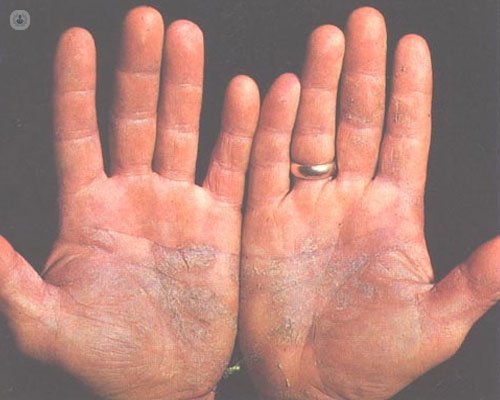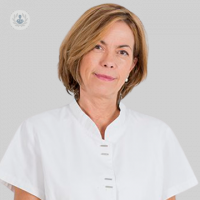Treatments for psoriasis according to their origin
Written by:Psoriasis is a genetic disease that can occur without obvious family history. It may be triggered as a result of stressful situations, trauma or infections, in addition to appearing as a reaction to some medication or surgery. These same factors can aggravate it once it has already appeared.
What is psoriasis?
Two types of psoriasis. On the one hand, which it appears in childhood or youth. Usually more extensive and is associated with other problems such as inflammation of the joints, increased cholesterol and triglycerides, blood fats, sugar, increased blood pressure and earlier arteriosclerosis and risk myocardial infarction and strokes. It is also associated with anxiety and depression due to social difficulties occur.
The second, less severe, usually occurs in people over 50 years. It is milder, localized and not usually associated with other disorders.

Psoriasis symptoms
Signs usually appear psoriasis manifests as redness and white scales on the elbows, knees, scalp and trunk. You can also alter the nails and body folds such as the armpits or English, in addition to the genital area.
Is psoriasis contagious?
It is not a contagious disease, but their presence in visible areas makes many patients suffering from rejection of society, even in the workplace. That can have serious effects on your personal life.
Can you try?
Despite being a disease that can not be prevented, many drugs have been developed to submit their effects. The most recent are called biologics, which have been created for the proper control of the disease.
For milder and localized forms as indicated it is to use topical products on those who have made great strides improving its absorption and ease of application.
For patients with more extensive forms there are drugs as a very effective pills or injectables, and easily controllable side effects if they are tracked by the dermatologist .
Children who have lesions have different treatment options, other than those of adults. This is especially medication that can be applied to the skin or ingested should be. In severe cases, medication may be injected.
Medications enjoy funding from the National Health Service. While moisturizers, shampoos or gels are not covered in Spain the public health system supports users so they can afford the drugs, the price can amount to more than a thousand euros. Private insurers also fund these treatments if the dermatologist reports the need for its use.
In any case it is essential consult a dermatologist as soon as possible for proper diagnosis. It is important to implement the necessary measures not to worsen symptoms. This is why it is recommended to lead a healthy lifestyle and moderate exercise, eat right and avoid snuff or alcohol.
It is also necessary to raise public awareness that this is a common disease, which affects 2.3% of the Spanish population. But that, although not contagious, causes major problems for patients, especially the lack of information in the population, causing great difficulties in social relations of the sick.


